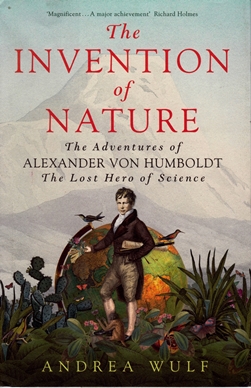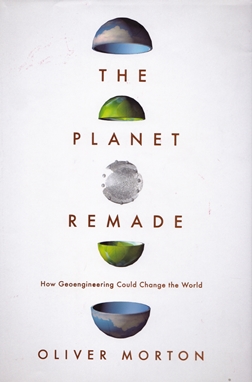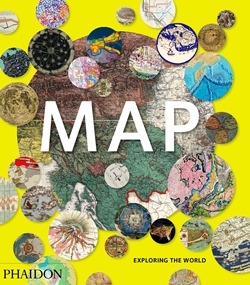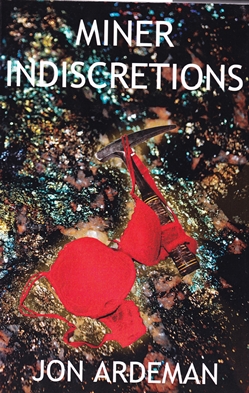 The Invention of Nature
The Invention of Nature
When Charles Darwin was hurriedly planning for his voyage aboard HMS Beagle in 1831, one major concern was – his library. Space was severely limited; only the best and most up-to-date books would do.
As everyone knows, Charles Lyell's was foremost among them, subsequent volumes of his Principles even being sent poste restante to Darwin during the voyage. There was also Daubeny on volcanoes; and D’Aubuisson de Voisins’ Traité de Géogosie. Adam Sedgwick, Darwin’s Cambridge tutor, had plenty of advice for the young tyro, and in the middle of it he wrote (letter dated 18 September 1831): “Humboldt’s Personal Narrative you will of course get. He will at least show you the right spirit with wh. a man should set to work – …”
Alexander von Humboldt (1769-1859) is indeed the ‘lost hero’ described in the title of this brilliant survey of his astonishing travels, work, influence (and influences). It is curious that the reputation of someone, described in his lifetime as ‘the most famous man in the world after Napoleon’, has been so eclipsed. Perhaps he influenced too many, too profoundly. Perhaps they owed him so much it was embarrassing. Perhaps he was too modern, now too much ‘part of the furniture’. Perhaps he was too independent. It is high time the English-speaking world remembered this Prussian aristocrat-scientist.
Although it may be too much to suggest that the vulcanist Humboldt foreshadowed plate tectonics, his achievements render such stretches unnecessary. In seeing the living and non-living world as a single entity, he invented the ecological approach and foreshadowed the Gaia hypothesis. He understood how human economics interfered (detrimentally) with natural systems; how agriculture and irrigation affected hydrosphere and biosphere; how colonial power led to ecological depredation and economic disaster.
A fervent anti-imperialist, anti-slavery libertarian, he even foresaw the effects of industrial emissions on the composition and behaviour of the atmosphere. In viewing Earth as a functioning whole, Humboldt really did ‘invent’ nature. His range of influences, from Goethe and Simon Bolívar to Darwin, Haeckel, Muir, Emerson and Thoreau, defies belief.
Humboldt entertained many intense intellectual friendships, but, as they say, ‘never married’. The prurient reader will chafe at Wulf’s refusal to go further into this matter: but she is too much a historian to ask anachronistic questions. Hard as it may be for us to conceive, I suspect that Humboldt’s mind really was on higher things. Chimborazo, Cotopaxi had him in their spell.
Reviewed by Ted Nield
THE INVENTION OF NATURE: THE ADVENTURES OF ALEXANDER VON HUMBOLDT, THE LOST HERO OF SCIENCE, by Andrea Wulf. John Murray, 2015. List Price: £25.00 473pp hbk

The Planet Remade
‘Geoengineering’ is a term created to encompass human actions taken to alter the Earth’s climate deliberately – i.e., where altering the climate is the point, rather than a side-effect. (We already have enough of those.) Its coinage has annoyed engineering geologists, but that’s not the half of it. I confess that the whole subject, and most of those who profess it, rather give me the creeps.
On the whole, geoscientists and ‘geoengineers’ do not mix. Folk who dream of brightening clouds, or lofting reflective aerosols into the stratosphere, or floating billions of ping-pong balls on the oceans (yes, that’s a real one) tend (on the whole) to come from disciplines allied to physics and chemistry, and the ‘military-industrial complex’. Armed with the ‘first-principles’ arrogance typical of this breed, they tend to march all over Earth System Science confident, one suspects, that it can all easily be sorted out now they have arrived. Or at least, that’s the caricature. Professor Bill McGuire (UCL), calls them ‘the ‘Are You Feeling Lucky?’ brigade’.
Most Geoscientist readers, I suspect, would concur. In a risk-averse age that has lost its admiration for what Morton refers to (in Simon Schaffer’s phrase) as ‘Promethean science’, with its grandiose 1930s-style improving-on-nature ambition, no government or assemblage of them is ever going to sanction ‘geoengineering’ until it’s really too late, and for all the reasons Morton cites in his analysis. Yet, he remains hopeful.
In the hands of a lesser writer, this book could have been merely an entertaining litany of bonkers science fiction schemes, such as often make ‘GIANT UMBRELLAS IN SPACE’ headlines from geoengineering conferences. Instead, based upon deep engagement with the subject since the early 1990s, he has produced a thoughtful and thought-provoking analysis of whether deliberate climate modification is feasible, whether it should be actively considered and pursued alongside mitigation (he believes it should), and a penetrating analysis of the political situations in which it might be deployed, and to which it might in turn give rise.
Morton is well aware of the difficulties, but remains attracted to the possibility. He places geoengineering within the context of an ‘Anthropocene’ where (let’s face it) nothing outside the aisles of a supermarket is ‘100% natural’ any more. Indeed, he waxes lyrical about a time perhaps not too distant when geoengineering not only helps us regulate temperature, precipitation, ocean pH and so on, but where the presence of our hands on the levers will signify that a long-lived and false division between the ‘human’ and the ‘natural’ has finally been expunged.
In the end, I feel his vision places too much confidence in science and the capacities of societies and individuals to cope with being in control. But I come away with a better understanding of where geoengineering ideas have come from and (perhaps) a slightly less jaundiced view of those who cling to them.
The book is full-on; I found myself yearning for some change of pace, tone or register. By the time one arrived, the book was almost over. It feels like being cornered at a party by an intense acquaintance: a party at which you might have had more fun with someone else, but from which you come away much better informed, still unconvinced, and not a little sobered. Morton has written a very good book about what I still believe is a very bad subject.
Reviewed by Ted Nield
THE PLANET REMADE – HOW GEOENGINEERING COULD CHANGE THE WORLD by OLIVER MORTON. Granta Books 2015. ISBN 978 1 78378 095 2 (hbk). List price: £20.00 W: http://grantabooks.com/the-planet-remade.
 Map – Exploring the World
Map – Exploring the World
With the 2015 bicentenary of William Smith’s pioneering geological map of 1815, maps have found themselves back in the ‘Geoscience’ news. By coincidence, Phaidon Press have published this wonderful compendium, illustrated with over 300 maps, each accompanied by a 2500-word description. The emphasis is on the visual representation of the maps following the long standing Phaidon tradition of high quality reproduction.
There are ‘traditional’ maps of all kinds from a 2600 year old map of Babylon to Smith’s map, Heezen and Tharp’s amazing ocean floor map (1977) and a recent (2014) geological map of the Martian surface. And then there are all sorts of other maps from those made by early explorers, native peoples and geographers, designers, artists to IT specialists and their depictions of the complex networks of social media.
The sheer variety of maps defies the production of a simple definition and as John Hessler, cartographer in the Library of Congress, says in his perceptive introduction, ‘…a map is still something that is best understood when seen as an image…rather than commented on verbally’. As Hessler adds: ‘this book puts the emphasis back on the experience of viewing rather than describing (a map)’. Perhaps the simplest criterion for recognising a map is that ‘you’ll know one when you see it.’
Likewise, the function of maps is equally diverse and imaginative - if ‘something’ exists, whether in fact or fantasy, then someone will have tried to map it. Mapping seems to be a fairly fundamental human activity resulting from our need to try to make sense of the world around us.
The arrangement of the maps is neither chronological nor straightforwardly thematic but intentionally thought-provoking, through the pairing of contrasting maps linked loosely by subject, age, purpose, technique or appearance. Some of these pairings are more stimulating than others but readers can always ‘curate’, as is the fashion these days, their own pairings by flipping back and forth through the book. However, a chronological survey of cartography, biographical notices of the map makers, along with a brief glossary, further reading and index are provided to help the reader navigate and explore this wonderful world of maps.
Reviewed by Douglas Palmer
MAP - EXPLORING THE WORLD by ROSIE PICKLES & TIM COOKE (Eds) 2015. Published by Phaidon Press Ltd, 352pp (hbk) ISBN 978-0-7148-6944-5. List price £39.95 www.phaidon.com.
Geoscientist READER OFFER! - For a limited time only – get 35% off Map: Exploring the World at: www.phaidon.com/mapbook.
 Miner Indiscretions
Miner Indiscretions
As its title might suggest, this is not a book that should be taken too seriously. Rather, it is a hilarious action-packed adventure, following young Timothy’s early geological career. At the start, he is a young graduate working on a modern deep gold mine in South Africa. However, he cannot control his emotions; his unrequited love leads to an assault on his competitor, and dismissal. In desperation he answers a dubious advertisement at a mine and a company no-one has heard of. He progresses unopposed through the haphazard selection, securing a new job exploring for gold in the dilapidated Yellow Snake Mine.
The tone in his new post is set on arrival as he falls into the office of the mine manager, demolishing the office door. All is not as it seems in this operation, with all sorts of scurrilous behaviour and scams. One of his first questions (about monthly tonnages and gold grades) elicits the response that these are ‘variable’. The run-down mine is faced with closure and all present are desperate to keep it open to save the tight-knit community in the face of certain unemployment thereafter. Actually prospecting for more gold takes rather a back seat in the possible actions.
The eccentric locals and expats employ desperate scams, illegal schemes, subterfuges and downright lies to find escape-avenues for the mine. Timothy initially struggles to reconcile his professional standards with the activities already taking place, but is soon inveigled into becoming involved in dubious activities, even leading some of them. Quite what he would have made of any sort of code of ethics remains uncertain as such prosaic considerations are not entertained. In carrying out these various illegalities, Timothy struggles through encounters with African wildlife, consultants, riots, ghosts, floods, government officials, explosions and a very frustrating sex life in his attempts to find some actual gold.
This is an entertaining read. I found myself reading on to see how the bizarre situations developed. I related to the misguided driving forces and the ingenious approaches adopted to convince the outside world that the mine has a future. You will have to read it to find out if they all lived happily ever after, but in doing so you are guaranteed to have a good laugh.
Reviewed by David Norbury
MINER INDISCRETIONS by JON ARDEMAN, 2013. Published privately. 340 pp softback. ISBN 1499304854. List price £7.65, ebook £1.99. W: www.facebook.com/miner.indiscretions